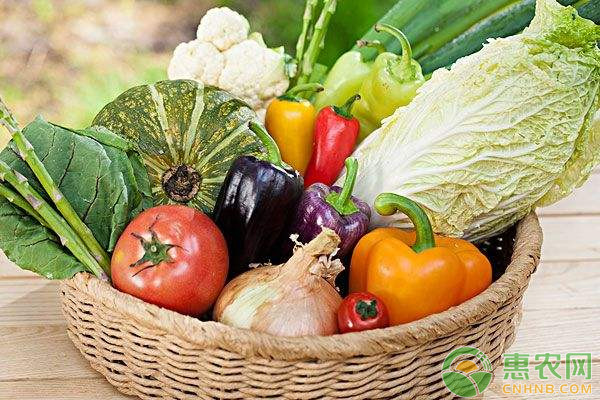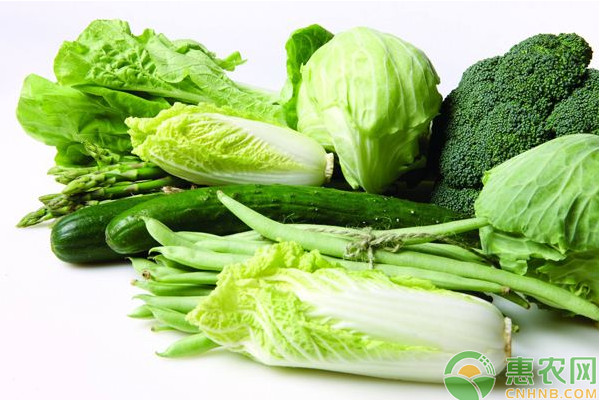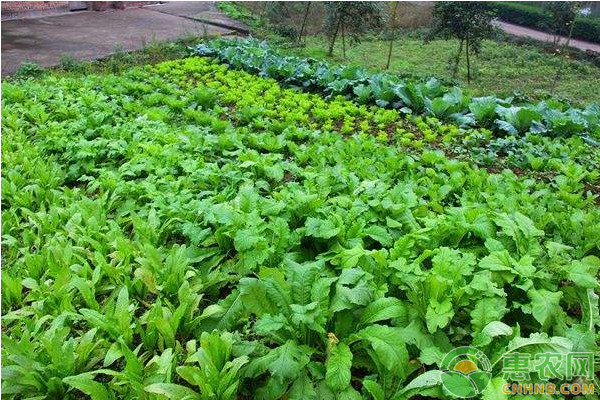Green prevention and control technology for pests and diseases in vegetable bases in southern China
Today, we will introduce the practical experience of green prevention and control technology of the South African Fairy Vegetable Production and Marketing Professional Cooperative. At present, the cooperative has accumulated a lot of practical experience in green prevention and control technologies such as photo-inducing, sexual attraction and bio-insecticides. The green prevention and control technology of the vegetable production base of the Fairy Vegetable Production and Marketing Professional Cooperative is summarized as follows. 1 Pest control technology 1.1 Agronomic measures 1.1.1 Seedling cultivation technology In the selection of seedlings, the vegetable base of the Fairy Vegetable Production and Marketing Professional Cooperative uses high-quality, disease-resistant varieties, cultivates disease-free seedlings, and establishes disease-free seedlings to reduce soil damage caused by seed carriers. The base uses high temperature to disinfect the seeds and seedbeds. In the deep winter, it adopts fire pit seedlings, electric hotbeds, summer and autumn cover insect nets, sunshade nets, adopts seedling seedlings, nutrition and seedlings, etc., thereby ensuring seedlings and seedlings, thereby promoting vegetables. The plant's resistance to stress reduces the incidence of pests and diseases. 1.1.2 Rotation, intercropping technology The base uses vegetables, food crops, intercropping, common vegetables and celery, carrots, leeks, onions and other special odors of vegetables intercropping, the combination of cabbage and tomato, in order to achieve the avoidance or prevention of locust pests. 1.1.3 Field Management Technology The base strictly implements the national green production standards in daily management, adopting black mulching film, artificial weed removal, applying organic fertilizer, implementing reasonable fertilizer and water management, cultivating and weeding, pastoral cleaning, etc., by eliminating the source of infection and intermediate host of vegetable pests and diseases. And carry out cleaning, concentrated burning or deep burial of sick bodies, destroying the habitat of pests and diseases, in order to achieve pest control. In addition, the base uses decomposed manure and uses the heat generated by the fully decomposed farmyard manure to kill the eggs, thus minimizing egg residue. 1.1.4 Farming Cordyceps Technology In the autumn, timely clean up the weeds in the field, such as sick and residual plants and residual leaves, and reduce the source of disease infection, thus reducing the amount of overwintering insects. In order to further destroy the living environment of the bacteria, the base uses 40 cm of deep tillage to kill some of the bacteria in the soil by ultraviolet radiation and low temperature in winter. Weeding by mechanical or artificial means, using weed control techniques to limit weeds, such as cabbage, cabbage and other vegetables with strong growth and strong weed ability, carrots, celery, etc. Weed ability vegetable rotation to suppress weed growth. 1.2 physical trapping prevention and control technology 1.2.1 yellow board trap The base uses yellow stalks of adult mites, mites and other adults to induce yellowing. Specifically, according to the characteristics and period of aphid occurrence (generally occurring in the middle and late stages of vegetable growth), in the first half of June, every three days, the yellow plate was inserted between the vegetables, or the silver-gray film was used to avoid the cockroach, 667 m 2 inserted 20 ~ 30 pieces, clean up and replace the yellow board after the pest is trapped. Of course, the yellow board trapping method mainly works during the day. 1.2.2 Light trapping The base uses the phototaxis of pests such as Plutella xylostella, beet armyworm, Spodoptera litura, chafer and rapeseed, and installs Jiaduo brand frequency-vibration insecticidal lamp in rice fields, using its light, wave, color, etc. to induce pests to ignite the light, and match The electric shock of the high-frequency grid of the frequency array realizes the purpose of trapping adult insects, lowering the base of pests, reducing the amount of eggs in the field, and controlling the damage. The insecticidal lamp is installed at a distance of 1.2 m from the ground, and one for every 2 hm 2 , which is mostly used for the adult pest stage (early June to the end of September). Taking into account the lighting effect, turn on the lights every evening, turn off the lights in the morning, and treat the pest residues once in 3 days. The prevention and control technology mainly works at night, and thus is a good supplement to the yellow plate trapping pest control technology. 1.2.3 sex attractant trap The base uses the sex pheromone of the pests of Plutella xylostella, Spodoptera exigua, Plutella xylostella, Spodoptera litura, etc. (the chemical constituents released by synthetic female moths after sexual maturity), attracts male moths seeking mating in the vegetable garden and will be in the trap. It kills and avoids mating with females, thereby reducing the reproduction rate of the progeny of Plutella xylostella, thereby reducing the population of the insects and achieving the purpose of controlling such pests. Of course, the use of sex attractants requires the selection of specific formulations and concentrations for each insect. This pest control technology is non-polluting, environmentally safe, and 100% compatible with other pest control techniques. The technology of sexual attractant pest control is better in the early stage of pests. Generally, the selection of insects from the ground in the period of April-May, Plutella xylostella, Spodoptera exigua, Plutella xylostella, Spodoptera litura, etc. Placed at 0.5~1 m, 3 pieces per 667 m 2 , nightly sputum, 1 d cleaned once. Of course, the method of attracting and killing sexual attractants has strict limits on the types of pests and diseases, and it is applicable to the breeding period of pests and diseases in time, so that it can be combined with other control methods to achieve good control effects. 1.2.4 Food lure trapping The base uses food attractants to attract pests such as fruit flies before the spawning, and sticks them to death or electrocution during the feeding process to prevent the pests from breeding the next generation, thereby achieving the purpose of controlling pests at the vegetable base. Specifically, an appropriate amount of a poison is added to the sweet and sour liquid which is eaten by pests such as armyworm, noctuid, and chafer to kill the adult insect. The pest control method does not have the problem of drug resistance, and has high stability and high efficiency, and plays an important role in the disease prevention and control of the vegetable base of the Fairy Vegetable Production and Marketing Professional Cooperative. 1.3 Biological control 1.3.1 Natural enemy insect control technology In recent years, the vegetable base of the Fairy Vegetable Production and Marketing Professional Cooperative has used biological control measures to vigorously promote the anti-insect technology of natural enemies. For example, in the pest control of the beans, the red-eye bee eggs (100 parasitic eggs (tussuck eggs)/cards) are hung on the bamboo shoots about 1 m above the ground, and the red-eye bee is released in about 3 days. To eliminate pests such as tigers and Spodoptera litura. Another example is that the ladybug egg card (each egg contains about 20 eggs) is placed on the bean field or the pepper field. After hatching for 1 to 2 days, the insects such as the locusts or the worms on the beans can be eliminated. Control eggs of lepidopteran such as whitefly, red spider egg, thrips larvae, leaf beetle, cotton bollworm, beet armyworm and diamondback moth. 1.3.2 Biological agent control In the early stage of vegetable diseases, the base also used biological pesticides and plant-derived pesticides to control pests. Specifically, Bt (Bacillus thuringiensis) is used for spray control in the egg hatching period of Plutella xylostella, Pieris rapae and other pests before the second instar, and if it encounters a high incidence of aphids, it is based on the prevention and control of physical trapping such as yellow plate trapping. It is sprayed with plant pesticides such as 5% natural pyrethrin (yunju) for spraying. Of course, in the process of prevention and treatment, it is necessary to strictly apply the drugs according to the requirements of each drug use, in order to effectively exert the efficacy of the drug. 2 application of organic fertilizer The base selects the self-produced organic fertilizer on the application of fertilizer. Specifically, the base walks and raises the cycle of development, and establishes a low-carbon agricultural model of internal micro-circulation between production projects such as planting and breeding to ensure the quality and safety of agricultural products. In order to deal with unsalable, yellow and dry vegetables, the base has also established pig farms. On the one hand, the use of slow-moving, yellow-brown, dried vegetables to solve pig feed problems, on the other hand, the pig's excrement into the biogas tank, The biogas produced by the biogas digester is used as a clean energy source for internal use of the base. The biogas slurry is used for watering and fertilizing the vegetable. The biogas residue is used for 3 to 4 months, and can be used as raw Material for organic fertilizer or directly used as an organic fertilizer for the vineyard. This reduces the amount of base fertilizer applied. The above is all the contents of today, welcome other farmers to come to Huinong.com to learn. You can also recommend Huinong to more people in need! Medical Device Component Machining Medical Device Component Machining,Suturing Device Linkage,Suturing Instrument Screw,Ultrasonic Scalpel Handle Changzhou Ziying Metal Products Co., Ltd , https://www.ziyingmetal.com


